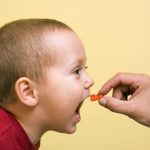- Business Insider brings back the Senior Director of NYC Health + Hospitals System-wide Special Pathogens Program and a professor of epidemiology at Columbia University to debunk 14 new common coronavirus myths.
- They talk about the effectiveness of masks and how they don’t cause CO2 poisoning.
- They also explain what it’ll take to reopen schools in the United States and keep them open. Schools in other countries started off with achieving a low number of cases, reducing classroom sizes, having children sitting further apart, and wearing masks.
- For the latest case total, death toll, and travel information, see Business Insider’s live updates here.
- Visit Business Insider’s homepage for more stories.
Following is a transcript of the video.
Morse: Hi, I’m Stephen Morse, professor of epidemiology.
Madad: My name is Dr. Syra Madad, and I’m an infectious disease epidemiologist here in New York City. Morse: In the past, we have debunked a number of myths. But new myths keep coming up, and the same old ones keep coming back. So let’s get to work debunking more myths today.
Madad: “Wearing a mask doesn’t do anything.”
Morse: And there are people who believe that. And one reason is that until recently, we weren’t really recommending masks because we didn’t know that they actually do a lot of good. There’s a recent study from Hong Kong that was published in Nature that proves that even surgical masks can prevent infected people from passing on the infection to others.
Madad: We have seen that in states that didn’t have a mask mandate, once they had that mask mandate, over a period of time, you did see the number of cases go down. So it’s important to continue to wash your hands and keep your distance while also wearing a mask.
Morse: “Wearing a mask is dangerous because you’ll get carbon dioxide poisoning.”
But it takes a lot of carbon dioxide to do it, and all of that actually goes through the mask quite readily. So it doesn’t build up in the mask. And we know that even when people are wearing masks, their oxygen levels in the blood are perfectly normal if they’re not sick. So part of it is really getting used to it, the way we get used to wearing a necktie, for example.
Madad: Looking at those healthcare workers that do wear it for an extended period of time, that’s a great model to show you that it does not cause carbon dioxide poisoning or toxicity.
Morse: “All schools should reopen because kids can’t get COVID-19.”
Once the schools reopen, we’re gonna see a situation where there are a lot of kids together and the possibility of transmission becomes much greater.
Madad: And on top of that, it’s not also just the kids, it’s also the teachers and the adults that are in these schools that are also at risk. And so we wanna protect everybody. There are countries in Asia that have reopened schools successfully and have been able to remain open. They started off with having low number of cases, and they also had contingency plans in place where you have smaller classroom sizes, children sitting further apart, wearing masks. You also have countries that have shown that they opened schools too early, and then they had to close down multiple times. And so we wanna make sure we’re in a position that we have the upper hand when it comes to this virus.
Madad: “Asymptomatic people aren’t contagious.”
Morse: Asymptomatic people, people who feel and look perfectly well, are contagious to others. And we worry about them because they may not know what they’re spreading.
Madad: In fact, during the early days, that is when you are most infectious.
Morse: The reality is we have to assume that anyone who could have it, indeed could have it, and they could pass it on to others. This is why we’re making recommendations that everybody should wear a mask, even if they’re feeling well, because we don’t know and they themselves may not know that they could be infected and able to infect others.
Madad: “Young, healthy people won’t die from COVID-19.”
We have seen cases where you have individuals that have no medical condition still unfortunately die from COVID-19.
Morse: It may be a very small proportion, but when you have a very large number of infected people, those numbers add up very quickly.
Madad: We are seeing, based on certain data that is coming out, is that even with young people, if they don’t have a severe case of COVID-19, they are at increased risk, for example, of strokes and other types of ailments. And so looking at the death rate in the young is a false sense of security.
Morse: “You cannot get COVID-19 twice.”
Madad: We still don’t know what long-term immunity looks like, and so in the immediate future, can you get reinfected with COVID-19 in a short period of time? The likelihood is no. Individuals that have been tested positive again for COVID-19 likely just have residual virus in their body or in their bodily fluids. But in terms of long term, can you get COVID-19 a year after or two years after? That is something that we still don’t know yet, and it’s one of those things that time will tell.
Morse: If you get it again, will it be less bad, will it be worse, will it be the same? We don’t know.
Madad: “You won’t get the virus if you hold your breath when someone sneezes or coughs.”
But what we know about these virus particles is that they can still land on your mucus membrane even if you’re not breathing. So, for example, if you’re touching a high-touch surface and then you’re touching your mucus membrane, you obviously are able to transmit the virus through that indirect means, if you will.
Morse: So, we have alternatives. We have masks, we have good hand hygiene, and social distancing to make sure that you won’t be in the line of fire when somebody coughs or sneezes. That’s a lot safer than holding your breath.
Madad: “Consuming disinfectants will kill the virus.”
Bleach and other types of disinfectants are not to be used for ingesting or injecting or to put on skin. These are corrosive chemicals. They can actually cause death and disability.
Morse: Use it on your floors. Use it on your countertops. That’s where it really does the work, and that’s what really helps.
Morse: “Cleaning your fruits and vegetables with bleach is effective.”
Madad: That is completely false. If you’re going to be putting chemicals on fruit and vegetables that you are then going to ingest, you’re putting yourself more in harm’s way. So, washing your fruit and vegetables is very similar to how you were washing your fruit and vegetables before COVID-19 existed. Washing it under water and making sure that you’re cleaning any fruit and vegetable. These are just basic good practices. ‘Cause it’s not just COVID-19 that obviously you wanna make sure that you are preventing, but it’s also all the other microbes that can cause illnesses.
Madad: “Warm weather will stop the coronavirus.”
Morse: Well, here we are at the end of July, and if anyone still believes that myth, I think we have plenty of proof.
Madad: There’s an epidemiological potential significance to warmer weather because people are going outside, but in terms of the weather itself and the effect on the virus, it has not shown to have impact.
Morse: So, until we find something like a vaccine that’s effective or something else that’s going to stop it, this virus, given the opportunity to infect, will continue to infect.
Morse: “99% of cases aren’t dangerous.”
Yes, it is true that probably only about 1% of those people who get infected and get sick are going to die, but many of the others will get very sick, and some of the others will get so sick that they may be affected for life.
Madad: Our indicator should not be the death rate, because you can have individuals that may have survived the infection of COVID-19 but then go on to suffer a stroke because of the long-term effects of COVID-19.
Morse: So a lot of these cases really are dangerous.
Madad: “The United States has one of the lowest mortality rates.”
Taking the mortality at its face value is a huge disservice because it’s not painting the full picture in terms of the whole effect that COVID-19 has on an individual.
Morse: Unfortunately, when you think about the entire population on mortality rate, it’s actually unbelievably high. We don’t really want to measure this by the number of people who get saved at the last minute. What we wanna aim for is really a low infection rate, because the infection is gonna be there. Mortality rate proves you’re just getting better at treating the severe cases.
Madad: “5G technology is spreading COVID-19.”
COVID-19 is spread by respiratory droplets when somebody coughs, sneezes, or talks. 5G towers and technology do not have an influence on your ability to get infected with COVID-19.
Morse: The reality is the two are totally unrelated. You can spread computer viruses through technology on the internet, but real viruses requires human contact.
Morse: “The media is blowing the pandemic out of proportion.”
I really wish this were true. And I think it depends a lot on which media you’re listening to. By talking about conspiracy theories and “no big deal,” to say that it’s all a hoax, these things help the virus. The virus doesn’t care. The reality is it’s here, it’s real, it will infect given the opportunity.
Madad: It is science, and it is evidence, and it is public health that will save lives. It’s not politicians, it’s not conspiracy theories, it’s not misinformation. And as we continue to learn together, the public-health guidance will change, because we wanna go with what we know to be effective in terms of keeping everybody safe.
Morse: Stay safe, stay well, and…
Madad: Stay tuned and stay informed, and that’s very important.
EDITOR’S NOTE: This video was originally published in August 2020.
Powered by WPeMatico






